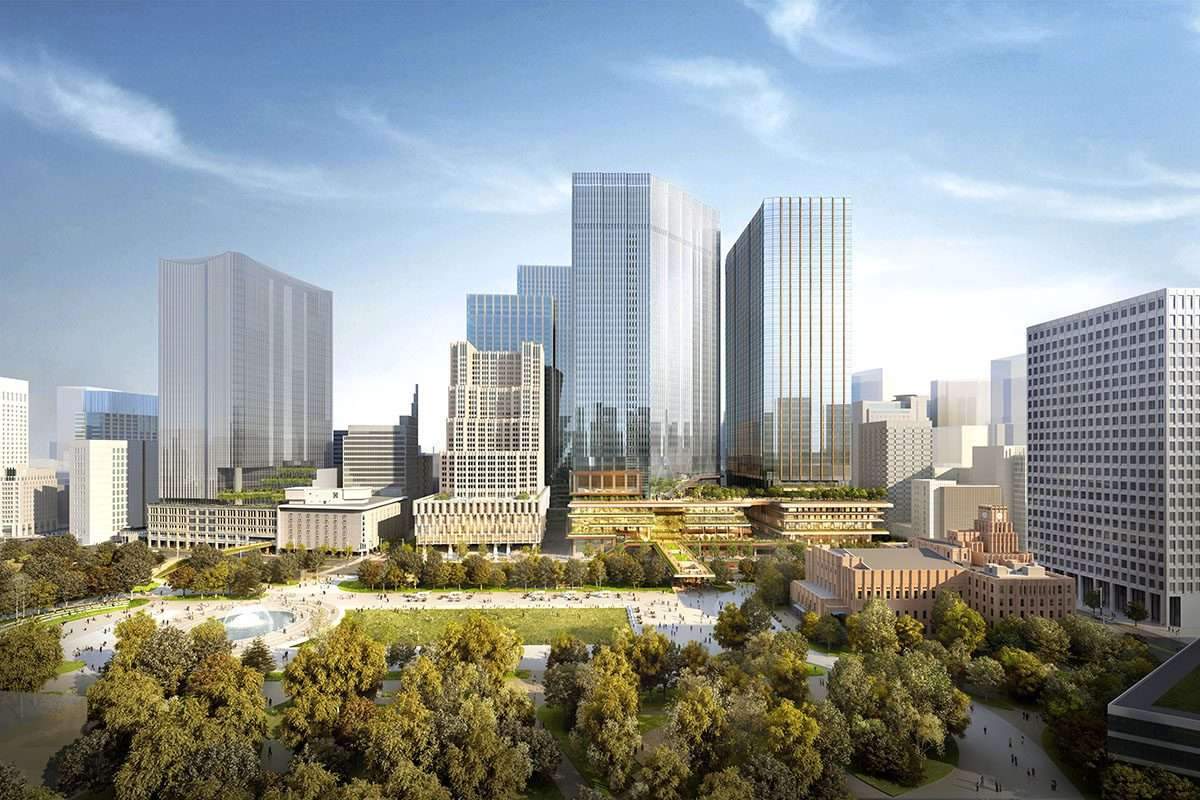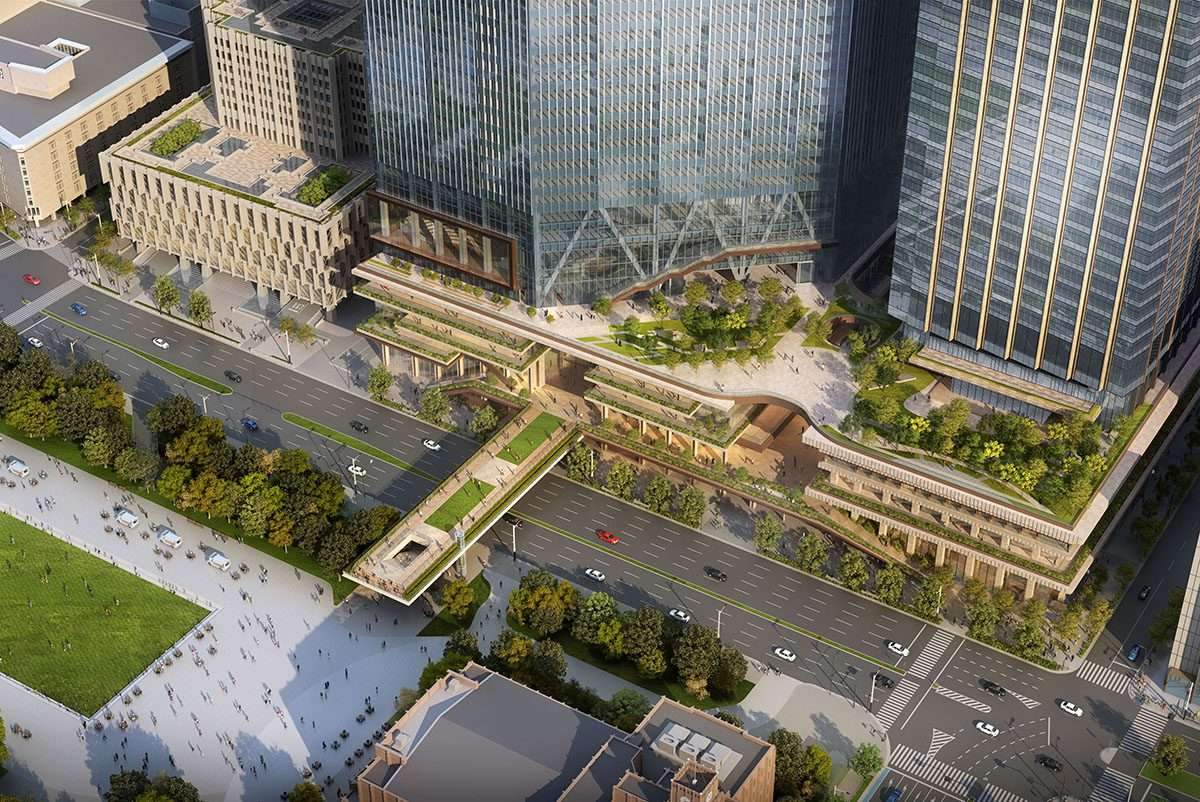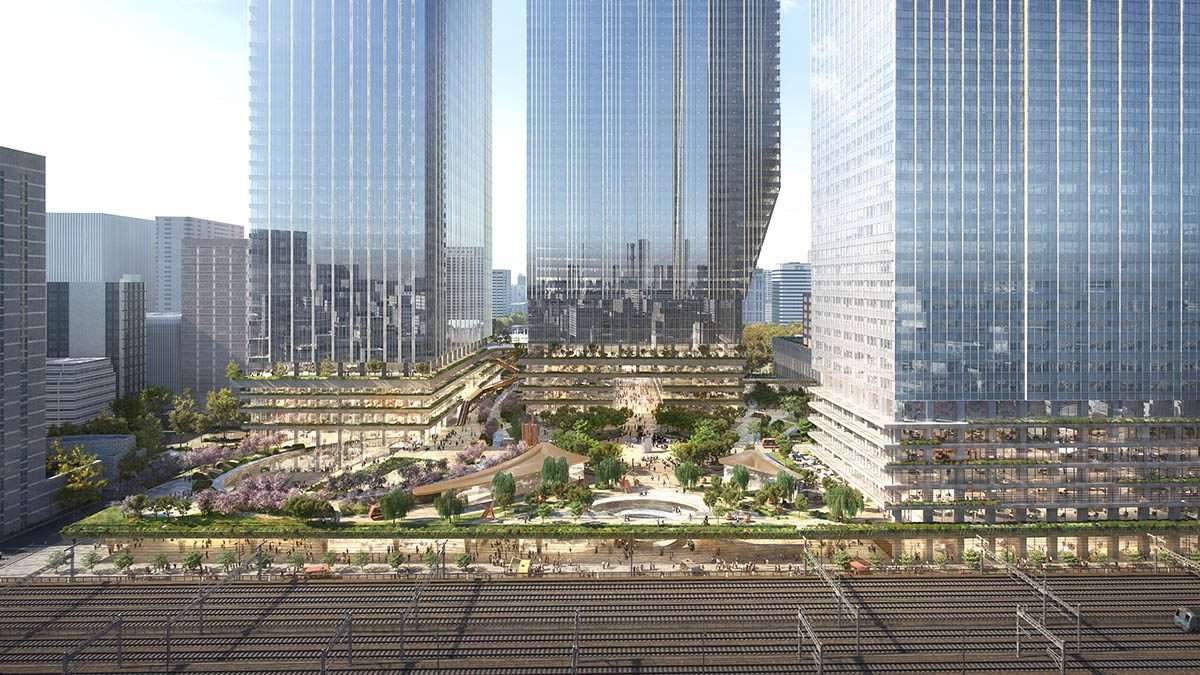Official blueprint for Tokyo Cross Park Vision revealed by PLP Architects,
Architectural firm PLP, a vision for the Tokyo Cross Park Master Plan,
has designed a new area redevelopment in the prestigious Uchisaiwaicho 1-Chome district in Tokyo, Japan.

The project Location
The site is located at the heart of Japanese culture, economy and politics, and the master plan,
“Green Heart”, covers an area of 230 hectares.
It will be connected to the 16-hectare Hibiya Park, overlooking the Imperial Palace in Tokyo.
PLP serves as lead designer and industry strategist for the entire 1.1 million square meter development project.
The largest in the Tokyo metropolitan area, the company will design two of the four mixed-use towers on the 6.5-hectare site.
The project has been developed for a multi-stakeholder partnership, which will consist of 10 of the most prominent Japanese companies.
The multidisciplinary group came together to co-create a new vision for urban development in Tokyo.

Objectives of the scheme
The PLP masterplan aims to provide a platform within the city,
that will facilitate collaboration between these different disciplines to develop future ideas.
The project site will be connected to Al Hebiya Public Park, which has an area of 16 hectares,
and will include 4 high towers on a 31-meter-high platform.
In addition to an elevated green public space and a public square of 2 hectares.
The comprehensive program is set to include offices, commercial facilities, hotels, residential spaces,
co-creation spaces, and an extensive indoor and outdoor public realm.
Each component is designed to work together to create a cohesive urban experience.
Design Features
The site consists of three zones: North, Central and South. In the northern zone is the new main building of the Imperial Hotel, designed by ATTA,
and the North Tower, designed by PLP Architecture.
Which provides premium hospitality offices, commercial facilities, serviced apartments and rental housing.
In the central district, connected to Hypia Park through an open-air “garden bridge”, the central tower,
also designed by PLP, will be equipped with offices, a hotel, a banquet hall, a multi-purpose hall and a multi-industry company.
In the southern district, the south tower, designed by Nikken Sekkei, will consist of offices,
a hotel and health promotion facilities.
Confirmed by PLP Architecture, this will propose a “widespread pedestrian network,
with safe and green roads, in a dense urban area that was previously dominated by vehicular traffic.
Official blueprint for Tokyo Cross Park Vision revealed by PLP Architects
The vision of Tokyo Cross Park, which is set to propose key parts of the city and the intersection of culture,
is based on uniting 3 concepts to create a set of new urban experiences.

The concepts are: uniting normal and urban life, uniting top talent in Tokyo and uniting Japan’s top ten companies.
The vision of Tokyo Cross Park is underpinned by five main principles: A city centered on people,
aiming to create a city that is truly “people centered.”
It aims to increase experiences throughout the site and improve people’s well-being,
give them a positive connection to nature in the city, and provide spaces for freely sharing ideas.
The second principle is urban x digital development,
where the region will be supported by advanced digital infrastructure, including digital twins,
which will enable it to become a multidisciplinary smart city of the third generation.
The third ingredient is called “omotinashi”, the Japanese word that takes pride in the world-class hospitality it offers, which is embodied in the term “omotinashi”.
The fourth principle is the development of luxury,
through the master plan that provides opportunities to bring the natural elements into the site as an extension of these green spaces.
The final component is Negative Carbon Access, which aims to showcase the possibility of reaching the government’s goal of carbon neutrality by 2050.


 العربية
العربية